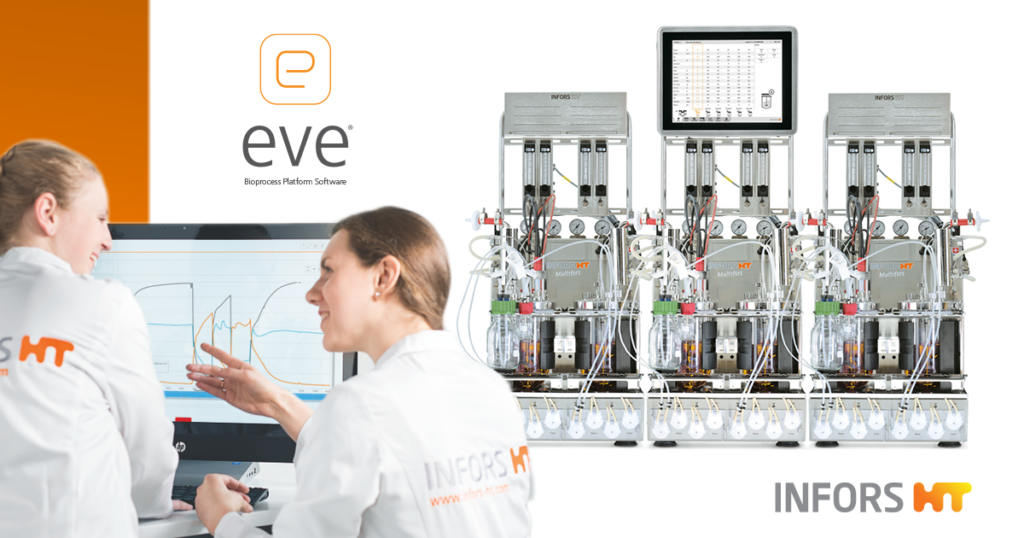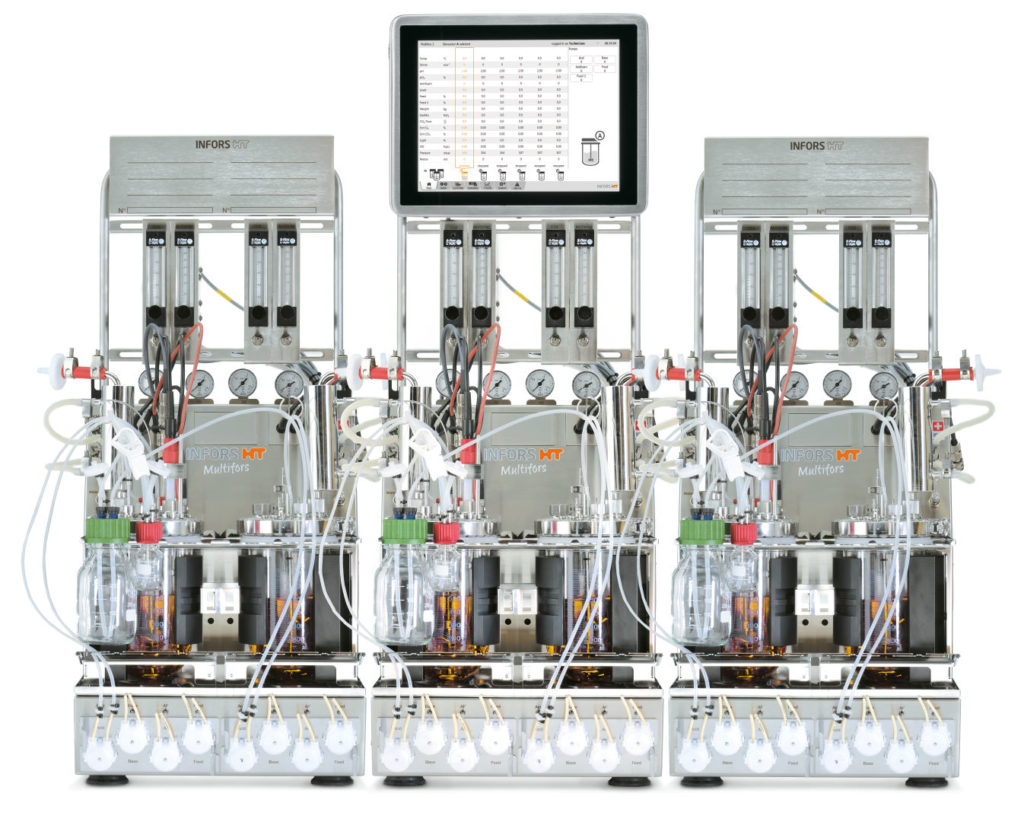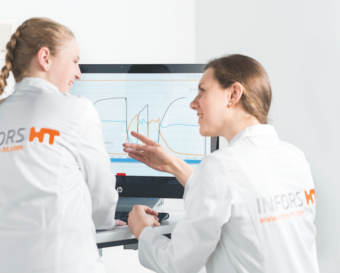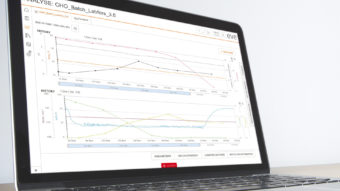In the ever-evolving landscape of biopharmaceutical processes development, companies are constantly seeking ways to enhance efficiency and streamline their operations. One formidable combination that has been gaining momentum is the use of a powerful and easy to use batch planning strategy with eve bioprocessing software and parallel bioreactors Multifors. In this article, we will delve into how the combination of these two tools can enable you to potentiate process development.

The High Stakes of Process Development
In the dynamic realms of biotechnology and biopharmaceuticals, the pursuit of innovation is deeply intertwined with process development. At the heart of diverse industries, and especially in biotech and biopharma, lies a critical imperative: the relentless quest to optimize and fine-tune processes that underpin the creation of life-changing products. The complexity of biological systems and the delicate balance required in their manipulation make the field of process development both demanding and indispensable.
Whether it be the use of microorganisms for the production of novel therapies or bio-based materials, the depth and breadth of work in process development requires the orchestration of multiple variables.
In this dynamic landscape, the demand for efficiency is not merely a desire; it’s a necessity. Companies find themselves engaged in a race against time, striving to bring products to market swiftly while maintaining the highest standards of quality. The pressure to expedite the development process is a response to the urgent global needs for life-saving medicines, and sustainable solutions in an innovative and cost-efficient manner.
According to a report by the Tufts Center for the Study of Drug Development, the average cost of developing a new drug and bringing it to market is estimated to be around $2.6 billion. Efficient process development can significantly reduce the time it takes to bring a drug to market, thereby decreasing development costs and increasing revenue potential. Furthermore, a study published in the Journal of Pharmaceutical Innovation found that implementing advanced process development techniques, such as parallel bioreactors and automation, can lead to productivity gains of up to 50% in biopharmaceutical manufacturing. This increased productivity allows companies to produce more products in less time, leading to higher profitability. Reducing the time it takes to transition from process development to clinical trials can save biopharmaceutical companies millions of dollars in development costs. For example, a one-month reduction in time-to-clinic for a typical biologic drug can result in cost savings of up to $30 million.[1]
Understanding Parallel Bioreactors
Parallel bioreactors allow for simultaneous runs of multiple batches, providing a high-capacity solution for accelerating process development. This means that instead of relying on traditional sequential approaches, companies can expedite their data generation, leading to quicker insights and optimizations.
Let’s take the example of a biotech company that is aiming to develop a novel therapeutic protein. Traditionally, the process would involve running a batch in a single bioreactor, waiting for the batch to complete, analyzing the results, and then moving on to the next batch. This sequential methodology not only consumes valuable time but also hinders the agility required for rapid adjustments and optimizations.
Parallel bioreactors are not new now, but they revolutionized this approach when they arrived on the market. The controllers and vessels are typically compact and designed to operate simultaneously whilst being able to maintain individual conditions. This parallel operation empowers researchers and transforms the development landscape, compressing timelines and accelerating the pace of discovery.

How Multifors makes Parallel
Process Development Efficient
The Multifors bioreactor not only provides the advantage of parallel operation. What sets it apart is the integration of a user-friendly touchscreen interface, enhancing intuitive navigation and usability. Each touchscreen facilitates parallel work across up to 6 vessels, each with a capacity of up to 1L. The sensor technology used is the same as typically used in larger-scale bioreactors and, therefore, eliminates a risk factor for the subsequent scale-up process.
The handling of the Multifors bioreactor is uniquely convenient, courtesy of its innovative handling of vessels and pumps. This stands in stark contrast to other conventional systems where users typically need to move vessels to and from a holder. The mechanism streamlines the workflow, allowing for a smoother and more efficient operation. Users can seamlessly engage with the system, eliminating the need for cumbersome manual transfers and enhancing the overall user experience. This feature not only saves valuable time and allows a single user to run more batches in parallel but also contributes to the precision and ease of managing multiple vessels in a parallel bioprocessing setup.

The system’s configuration allows for increased space dedicated to the installation of sensors per culture volume. This not only enhances data acquisition accuracy but also contributes to lower operating costs for media. Accessibility is maximized at connection points, reducing the need for manual handling of connectors and minimizing the likelihood of user-induced errors. The system’s commitment to aseptic operation extends to sampling procedures, prioritizing contamination prevention and maintaining the integrity of each culture throughout the bioprocessing workflow.
The Multifors bioreactor, with its comprehensive features, emerges as a holistic solution that not only streamlines processes but also prioritizes precision, reliability, and cost-effectiveness. All in all, the system minimizes mechanical intricacies, allowing one single user to easily handle a multitude of vessels making it perfect for increased performance per user.
The Key to Maximize Efficiency:
Quicker Insights and Optimizations
The real magic happens when the Multifors is coupled with eve and its advanced yet easy batch planning and control system that allows for an increased level of automation. Each vessel can be assigned different parameters, offering a tailored approach to process development. With eve, multi-batch planning becomes a reality – a single configuration effort results in the detailed execution of the bioprocess. This goes beyond the traditional approach of one recipe following another; instead, researchers can create a template and customize it based on specific needs, providing a flexible yet structured foundation.

Together, these tools open new avenues for discovery, enabling companies to optimally navigate the area of process development with agility and precision.
The acceleration is not merely quantitative. It fosters an environment where insights emerge rapidly, and optimization becomes an iterative and dynamic process. By embracing parallel bioreactors, companies can execute a multitude of batches simultaneously, which in turn generates a wealth of data in a fraction of the time it would take with traditional methods. This makes it crucial to have software capable of taking the exponential amount of information, tracking it, monitoring the process, and analyzing it in a way that valuable insights are generated for the users and staff in front of the operations. Eve does this and allows you to gain insights on your bioprocess that will help you stay on top of every single detail within your process development.
It’s worth noting that eve software seamlessly interfaces with an unlimited number of vessels, effectively expanding the potential for parallel work to unprecedented scales. This integration not only optimizes efficiency but also ensures a seamless connection between hardware and software for a comprehensive and streamlined process development experience.
This capability proves particularly valuable for comparing parameters, enabling the identification of optimal configurations, and streamlining the optimization process. Eve’s insights into process steps make it the ideal, one-of-a-kind tool for process development, offering a comprehensive understanding of the intricate stages and facilitating continuous improvement with each iteration. With the real-time monitoring of each batch, providing immediate insights into the impact of varied conditions on the process, researchers can even swiftly identify optimal parameters, troubleshoot issues, and make informed decisions on the fly.
In essence, the Multifors bioreactor and eve together do more than just increase the pace of process development; they redefine the possibilities. They empower companies to navigate the intricate terrain of process development with agility, ensuring that the journey from concept to optimized process is not only quicker but characterized by a depth of understanding and efficiency that was previously out of reach.
Learn more about INFORS HT Bioreactors and the Multifors for parallel work.
Learn more about eve – The Bioprocess Platform Software
Curious about how this integration can transform your processes? Get in contact for a consultation.
Request a live demo to see how parallel bioreactors and eve software can elevate your processes.
[1] According to research conducted by the Biotechnology Innovation Organization (BIO)



